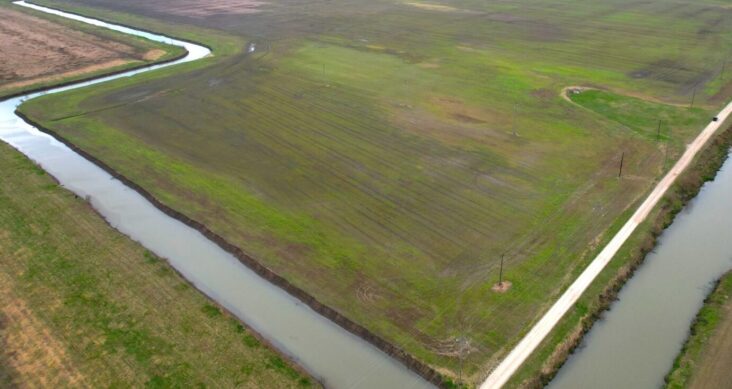Expert: Levees not addressed by Supreme Court decision on WOTUS
by May 30, 2023 4:45 pm 1,202 views

Last week, the U.S. Supreme Court narrowed the Environmental Protection Agency’s ability to define “waters of the United States” under the provisions of the Clean Water Act. But there are other parts of the act that apply to many Arkansas farmers that have not been addressed.
How the EPA will handle wetlands separated by levees for flood control and dry creek beds will be of high interest for farmers, the National Agricultural Law Center’s Brigit Rollins said.
The high court’s opinion on a case out of Idaho, Sackett vs. Environmental Protection Agency, rejected the EPA’s argument that a wetland near Priest Lake on the Sackett’s property should be considered “waters of the United States,” or WOTUS, because it did not share a continuous surface connection to the lake. Thus, the court found, the wetland should not be subject to the Clean Water Act and the Sacketts are now cleared to build their home on the land after 16 years of litigation.
“The EPA is probably going to have to revisit its most recent definition of WOTUS, in no small part because what is in the EPA’s 2023 definition does not comport with what is in this opinion,” Rollins said.
The justices held that the Clean Water Act’s definition of “waters” should be limited to “geographic[al] features that are described in ordinary parlance as ‘streams, oceans, rivers, and lakes’ and to adjacent wetlands that are ‘indistinguishable’ from those bodies of water due to a continuous surface connection.”
Rollins said the opinion gets to the heart of what wetlands can be covered by the Clean Water Act by stating it has to share some kind of continuous surface connection.
However, she said, discussion may remain for narrowing what is considered an “adjacent wetland” if it contains a man made levee for flood control.
“If it is a wetland that would share a continuous surface water connection with, say, the Mississippi River, if not for a levee … are those now no longer jurisdictional? Questions like this will be left for agencies and lower courts to determine how the opinion is interpreted,” Rollins said.
How the ruling will impact land in Western states that contain dry creek beds, also known as “washes,” that drain into a body of water covered by the Clean Water Act is another question that will have to be answered, she said.
The landmark 9-0 ruling stripped away the EPA’s regulatory powers when it comes to pollution control in U.S. waterways. The decision is being hailed as a win for property rights advocates while being touted as a blow to environmental protection efforts.
Justice Samuel Alito, writing for the majority, stated the regulations were too broadly applied and it could criminalize many property owners throughout the country.
While the court was unanimous when it came to deciding who should win the lawsuit, it had a 5-4 split decision on how far the EPA should be able to go when it comes to regulating wetlands. Justice Brett Kavanaugh joined justices Elena Kagan, Sonia Sotomayor, and Ketanji Brown Jackson in the minority dissent.
Kavanaugh argued that limiting the EPA’s regulatory powers could lead to rampant pollution problems and flood control damage in the country’s waterways.
